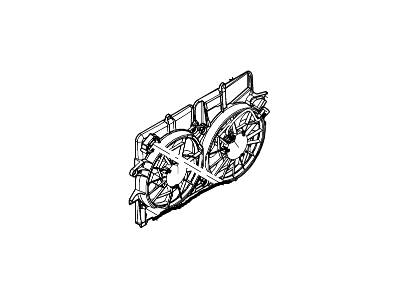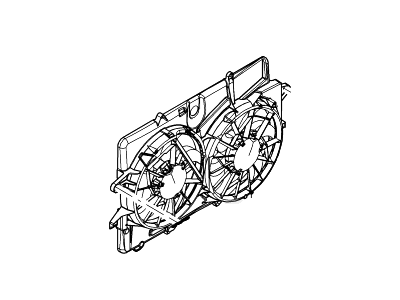×
- Live Chat
- 1-888-788-9341


My Garage
My Account
Cart
Genuine Mercury Mariner Engine Cooling Fan
Radiator Fan- Select Vehicle by Model
- Select Vehicle by VIN
Select Vehicle by Model
orMake
Model
Year
Select Vehicle by VIN
For the most accurate results, select vehicle by your VIN (Vehicle Identification Number).
7 Engine Cooling Fans found
Mercury Mariner Motor And Fan Assy - Engine Cooling
Part Number: 8L8Z-8C607-B$207.10 MSRP: $345.45You Save: $138.35 (41%)Ships in 1-2 Business DaysMercury Mariner Motor And Fan Assy - Engine Cooling
Part Number: 5L8Z-8C607-CB$157.38 MSRP: $215.04You Save: $57.66 (27%)Mercury Mariner Motor And Fan Assembly - Engine Cooling
Part Number: 8L8Z-8C607-A$191.47 MSRP: $312.73You Save: $121.26 (39%)Mercury Mariner Motor And Fan Assy - Engine Cooling
Part Number: 5L8Z-8C607-HB$217.07 MSRP: $354.55You Save: $137.48 (39%)Ships in 1-2 Business DaysMercury Mariner Motor And Fan Assy - Engine Cooling
Part Number: 5M6Z-8C607-AH$937.40 MSRP: $1563.64You Save: $626.24 (41%)Ships in 1-2 Business Days
Mercury Mariner Engine Cooling Fan
We provide a wide range of Mercury Mariner Engine Cooling Fan at the best prices possible. If you need Mercury Mariner Engine Cooling Fan, you can shop with confidence on our website. All our OEM parts come with a manufacturer's warranty and are delivered to your door step with a fast delivery service.
Mercury Mariner Engine Cooling Fan Parts Questions & Experts Answers
- Q: How to replace a cooling fan and relay in an overheating engine on Mercury Mariner?A: If the engine is overheating and the cooling fan is not coming on when the engine temperature rises to an excessive level, unplug the fan motor electrical connector(s) and connect the motor directly to the battery with fused jumper wires. If the fan motor doesn't come on, replace the motor. If the Radiator fan motor is okay, but it isn't coming on when the engine gets hot, the fan relay might be defective. Locate the fan relays in the engine compartment fuse/relay box. Test the relay. If the relay is okay, check all wiring and connections to the fan motor. If no obvious problems are found, the problem could be the Engine Coolant Temperature (ECT) sensor or the Powertrain Control Module (PCM). Have the cooling fan system and circuit diagnosed by a dealer service department or repair shop with the proper diagnostic equipment. Disconnect the cable from the negative battery terminal. Disconnect the fan motor electrical connector(s). Raise the vehicle and secure it on jackstands. Drain the cooling system. If the coolant is relatively new and still in good condition, save it and reuse it. Remove the hood latch. Remove the upper radiator hose. Loosen the hose clamp by squeezing the ends together. Hose clamp pliers work best, but regular pliers will work also. If the radiator hose is stuck, grasp it near the end with a pair of adjustable pliers and twist it to break the seal, then pull it off. If the hose is old or if it has deteriorated, cut it off and install a new one. Remove the center support bolts and lift the center support from the engine compartment. Remove the left and right upper radiator support brackets. Tilt the radiator forward to make additional clearance for fan removal. Detach the wire harness from the fan shroud, remove the upper and lower fan shroud mounting bolts and then carefully lift the fan motor and shroud out of the engine compartment as a single assembly. Remove the fan mounting screws. To detach the fan blade from the motor, remove the nut or retaining clip from the motor shaft. Remove the fan blade from the motor. To detach the motor from the shroud, remove the retaining bolts. Remove the motor from the shroud. Installation is the reverse of removal. Make sure the rubber air shields around the shroud are still in place-without them, the cooling system may not work efficiently. Reconnect the battery and refill the cooling system. After you're done, the Powertrain Control Module (PCM) must relearn its idle and fuel trim strategy for optimum driveability and performance. Start the engine and allow it to reach normal operating temperature, then check for leaks and proper operation. Raise the vehicle and support it securely on jackstands. Drain the engine coolant. Remove the front bumper cover. Remove both airbag sensors. Disarm the airbag system before performing any work in the area of the cooling fans. Remove the brackets from the top of the radiator. Remove the nut and bolts from the hood latch, then set the latch aside with the cable attached. Detach the wiring harness clips from the radiator. Remove the bolt from the vertical center brace in front of the radiator. On four cylinder models, disconnect the wiring from the fan resistor, then disconnect the coolant recovery hose and push it to the side. Disconnect the wiring from the cooing fans. Remove the two cooling fan mounting bolts and carefully lift the fan assembly out of the engine compartment. Installation is the reverse of removal.


















